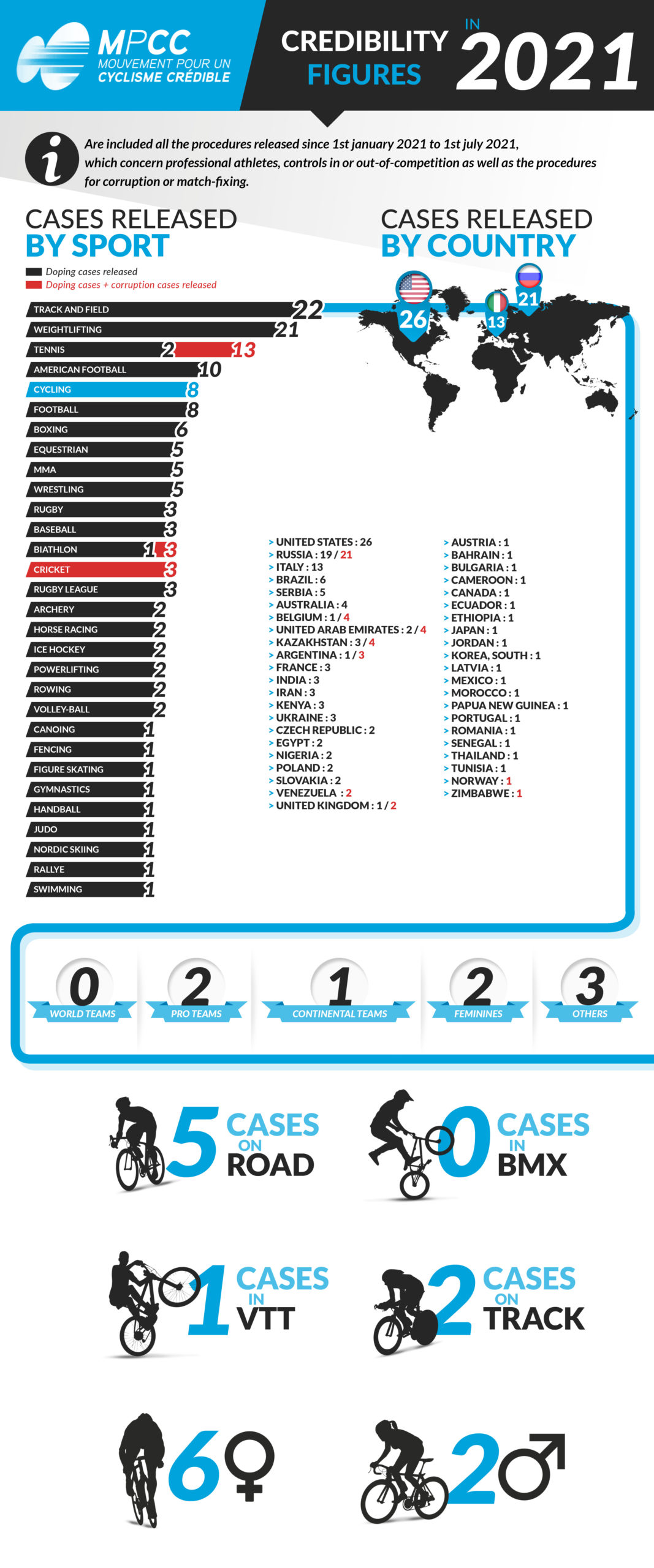Just like last year, it hasn’t proven possible, over the first six months of 2021, to regain the same quantity of tests (in and out of competition) that was carried out by anti-doping agencies and federations before the pandemic.
Logically, as fewer controls were carried out, fewer disciplinary procedures were revealed during this first half of 2021 in comparison with recent years. Although our figures might not be exhaustive, we have recorded 139 cases since the beginning of the year, compared to 227 last year and 190 in 2019 at the same period.
Suspected doping cases often refer to samples taken several months prior. There is therefore a significant gap between the date a sample is collected, and the date in which a procedure, or a positive control, is publicly revealed. Some federations do not communicate about a doping case until the end of the procedure, when the athlete is actually punished.
As in 2020, there is a slight decrease in the number of competitions this year. However, its impact on the credibility figures that we have been publishing for the past 7 years must be put into perspective, as the cheaters are mostly caught thanks to out-of-competition controls. For instance, since 2015, no Tour de France rider has tested positive during the race.
With 8 cases (including 3 already punished), cycling holds 5th place. These procedures mainly affect men (6, for 2 women). Two riders come from pro teams, but none from world teams.

